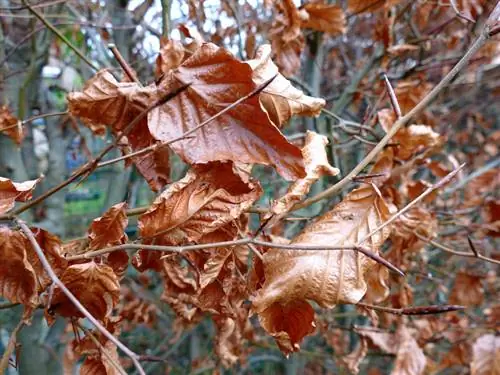- Author admin [email protected].
- Public 2023-12-16 16:46.
- Last modified 2025-01-23 11:21.
Hedges are beautiful property boundaries. However, they only make a visual impression if they have a well-groomed shape. So a bit of care like regular rejuvenation is required. But which method is gentler? Does a radical cut cause the hedge to sprout new growth or is regular intervention more effective? Find out the answer below.

How do I best rejuvenate my hedge?
To rejuvenate a hedge, it is recommended to carry out regular pruning two or three times a year between March and August, rather than a radical cut. Choose a warm, overcast day and cut back young shoots, dead branches and discolored leaves.
The hedge is best cut regularly
Coniferous trees such as Thujas are particularly popular for hedges. If you don't cut these plants back, they will grow amazingly. Unfortunately, a radical cut makes the injured shoots very sensitive to frost. It is therefore better to carry out small interventions at shorter intervals.
Frequency tips
While radical cuts are only permitted in late summer (birds breed in their branches), you can make topiary cuts all year round. To rejuvenate a hedge, we recommend pruning it two or three times a year between March and August.
Time
- the first cut in March: the plant is still in hibernation. Now you can cut off a little more
- the second cut in June: best around June 24th, St. John's Day
- the third cut: just don't make it too late, otherwise the plant will recover poorly
Weather Conditions
Choose a day when it is neither freezing nor too sunny. On the one hand, the hedge plants are very sensitive to frost, but on the other hand, when they are pruned, they expose areas that are not used to intense sunlight. A warm, overcast day is optimal.
Tip
To make your hedge nice and straight, stretch a rope between two pillars at the beginning and end of your hedge. You can use this as a guide.
You should remove dead branches and discolored leaves without leaving any residue. Otherwise, make sure to only remove the young shoots and not to cut into the trunk (€24.00 on Amazon).






